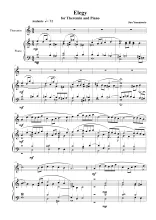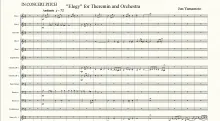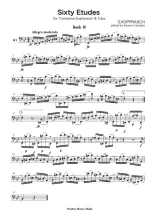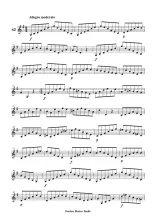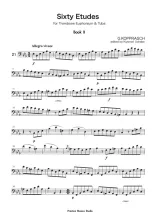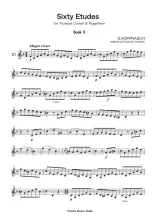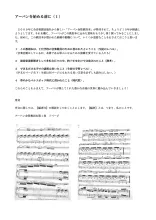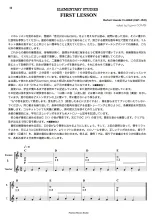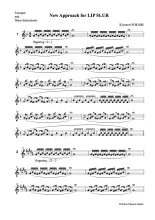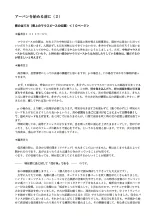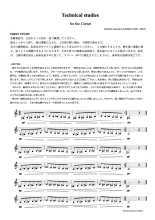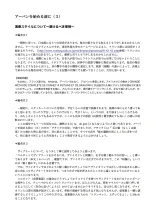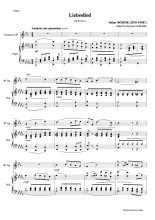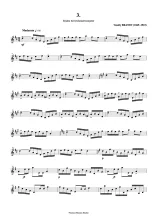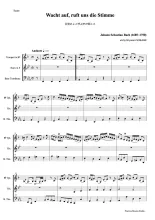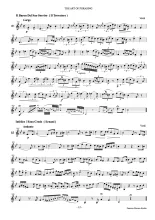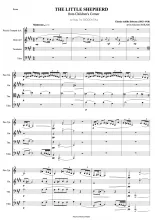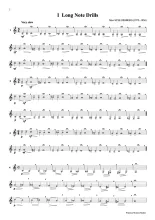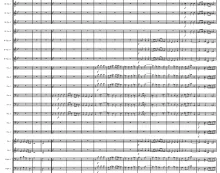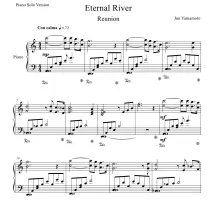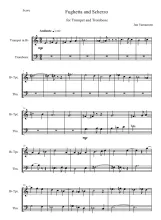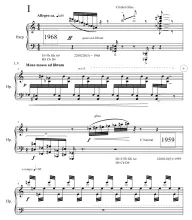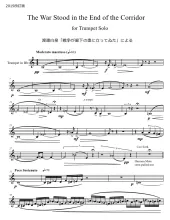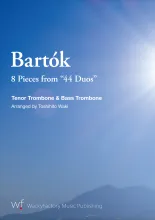New Releases
Our Staff Picks
News
Paraphrase On "Ein' feste Burg ist unser Gott" (Brass Ensemble)
YAMAMOTO, Jun山本準
There are several different versions of the hymn "Ein' feste Burg ist unser Gott" by Martin Luther including one arranged by J.S. Bach. This music has been composed using the materials taken from those. Beginning with a chorale by French Horns and Euphoniums, the theme is introduced from lower to higher registers and it enters into the part of combination of thick chords and fanfare of major triads. After a rhythmic divertimento with fragments, the theme appears again in tutti. After the recollection of the first part, the music ends with combined two chords, Bb major and F# major triads. It is an ode to Reverend Martin Luther and his achievement as well as a paean to the brass instruments and their ensemble.
This piece has premiered in the “Concert in Commemoration of the 500th Anniversary of the Reformation”, by the brass ensemble of students of the Seminar by Professor Kiyonori Sokabe of Senzoku Gakuen College of Music, Yasuko Ii (organ) and Prof. Sokabe (conductor) on October 13, 2017, in the Reinanzaka Church, Akasaka, Tokyo, Japan.
賛美歌「神は我がやぐら」は、ルターの原曲から、バッハによるコラールを含め様々な形が伝えられているが、それらを素材として自由に再構成した作品である。ホルンとユーフォニウム主体のコラールで始まり、主題がバスから順次高音に積み重ねられていく。中間部は長三和音を中心としたファンファーレが鳴り響き、重なり合い、さらに変形された主題によるAllegro assaiのディヴェルティメントを経て、トゥッティによるテーマの提示のあとBbとF#上の二つの長三和音 を響かせて曲を閉じる。ルターの偉業へのオマージュであると同時に金管賛歌でもある。
本作品は洗足学園音楽大学曽我部ゼミの演奏会演習として宗教改革500周年記念特別演奏会のために書かれ、同演奏会にて、曽我部ゼミナールの2017年度修習生による金管合奏、飯靖子氏(オルガン)、曽我部清典氏の指揮により、2017年10月13日、東京・赤坂の霊南坂教会にて初演された。
Eternal River-Reunion (Solo Piano Version)
YAMAMOTO, Jun山本準
"Eternal River-Reunion" was written in 2000 for solo piano and small orchestra. This score is a solo piano version of the piece arranged by the composer in 2017. The duration of the piece is approximately 6 minutes and 20 seconds. You can listen to the piano-orchestra version in YouTube. https://www.youtube.com/watch?v=3DTZ2J9vaY8&index=22&list=PLOu-ax8EMKD5fT3vA9Tghf_Voo1yujYD1
"The river flows unchanged for hundreds of years. I wish to meet with you again by this river beyond one thousand years...."
Eternal River-Reunion は2000年の作品。オリジナルはピアノと小編成オーケストラで書かれていますが、ピアノ独奏バージョンをお届けします。演奏時間は約6分20秒です。オリジナルバージョンは、YouTubeで聞くことができます。https://www.youtube.com/watch?v=3DTZ2J9vaY8&index=22&list=PLOu-ax8EMKD5fT3vA9Tghf_Voo1yujYD1
「河の流れは何百年も変わることがない。1000年後にあなたとこの河畔で再会できたら…」
Fughetta and Scherzo for Trumpet and Trombone
YAMAMOTO, Jun山本準
The composition consists of two parts.
1. Andante, 3/4, d minor, 2-voice fughetta. The tonality flows one to another but music as a whole will rise towards the dominant of d moll. After a perfect cadence, it enters the second part.
2. Agitato 3/4 d minor scherzo. After pausing once on B flat, there come cadenzas in the order of trombone and trumpet. Recalling the theme of the fughetta, the coda reaches the end keeping the tempo.
This piece has been premiered by Kiyonori Sokabe(trp.) and Norikazu Naoi(trb.) on July 22, 2017, in Tokyo.
二つの部分からなる。第一の部分はアンダンテ、4分の3拍子、ニ短調の2声のフゲッタである。調性は流動するが、音楽は全体としてニ短調のドミナント(属和音)に向かって高揚する。全終止とともに、第二の部分に入る。同じくニ短調の速い4分の3拍子のスケルツォである。変ロ音上で一旦休止した後、トロンボーン、トランペットの順でカデンツァを奏する。コーダ部分はフゲッタの主題を回想しながら、急速を保ったまま一気に終結に至る。本作品は、2017年7月22日、曽我部清典・直井紀和両氏により、「トランペット&トロンボーン デュオ vol.1」にて初演された。
M=h(n) (Harp Solo)
YAMAMOTO, Jun山本準
A harp has 7 pedals, which correspond to 7 notes, i.e. do-re-mi-fa-sol-la-si. Each pedal can take three different positions, namely flat, natural and sharp. Therefore, a harp can be set for 2,187 different modes (scales) (3 to the power of 7). The instrument could be considered as a "function". The 7 notes can be mapped to 2,187 different scales. The name of the composition "M=h(n)" is derived from the mechanism. In this composition, the 22 different scales are used . This piece has been premiered by Makiko Suzuki in "La Folia-a concert for openly-invited compositions" on July 21, 2017, in Tokyo, Japan. The composer thanks to her for her invaluable advice on the music
ハープはドレミファソラシの七つの音を入力として、その7つあるペダルの位置によって異なる音階に移しかえる一種の「写像」であると考えられる。7つのペダルはそれぞれ、♭、ナチュラル、♯、の三つの状態のいずれかに位置させることができるので、ハープの演奏可能な音階は3の7乗=2,187種類あることになる。この中には伝統的な長音階、短音階、減七和音、属七和音、教会旋法なども含まれるが、それらに限らず一般的でない異なる音階も使ってみたいというのが作曲の動機である。この曲では22種類の異なる音階を使っている。
本作品は、2017年7月21日、東京にて「公募作品演奏会『ラ・フォリア』」において、鈴木真希子氏のハープ独奏により初演された。作曲者は初演にあたっての鈴木氏の貴重なアドバイスに深謝する。
The War Stood in the End of the Corridor (revised version 2019) Trp solo
YAMAMOTO, Jun山本準
The title of the tune is a HAIKU by Hakusen Watanabe(1913-1969). This is a terribly scary poem to EVEN me, who has been born more than 10 years after the end of WW II. The war must be casually standing in the end of a corridor. The instrument, TRUMPET is inevitably linked to the military forces. I wish a trumpet to express the horribleness of the HAIKU, implying wherever the war is hiding and waiting. The tune includes several quotes from the music relating to and written during the war by Schoenberg, Prokofiev, and Shostakovich. This music has premiered by Mr. Kiyonori Sokabe in the concert "Composers in Chugoku/Shikoku in Tokushima 2016". The revised version has been performed by Mr. Sokabe on December 22, 2019.
(作曲者ノート)昭和初期に活躍した俳人、渡辺白泉の無季の句「戦争が廊下の奥に立つてゐた」の印象は強烈である。薄暗い廊下の奥に何かの気配を感じるとそこには「戦争」が立っていた、というのである。戦後十年以上を過ぎて生まれ、「戦争を知らない子供たち」(北山修)として育った私ですら恐怖を感じるが、戦後70年を経てこの恐怖は若い世代に伝わるだろうか。
トランペットはいわゆる「喇叭」であり軍隊とは切っても切れない関係を持っている。そのトランペットに一句の恐ろしさを表現させてみたいというのが作曲の動機である。曲中に、シェーンベルク、プロコフィエフ、ショスタコーヴィチらの戦争に関する、あるいは戦争中に書かれた音楽の引用を含む。2016年10月29日「中国・四国の作曲家 in 徳島 2016」にて、曽我部清典氏の演奏で初演され、2019年12月22日に埼玉県南浦和にて改訂再演された。
